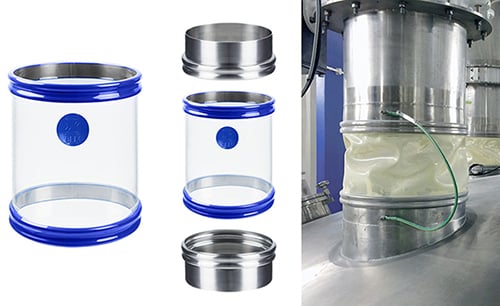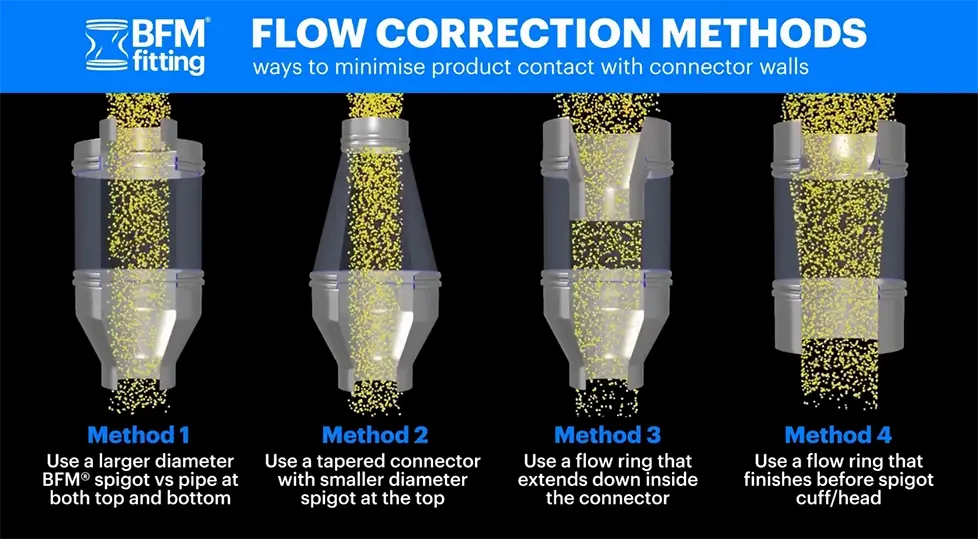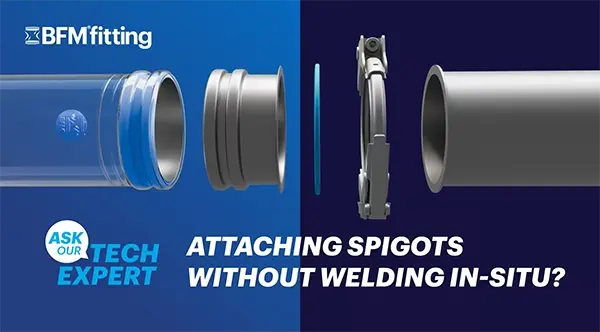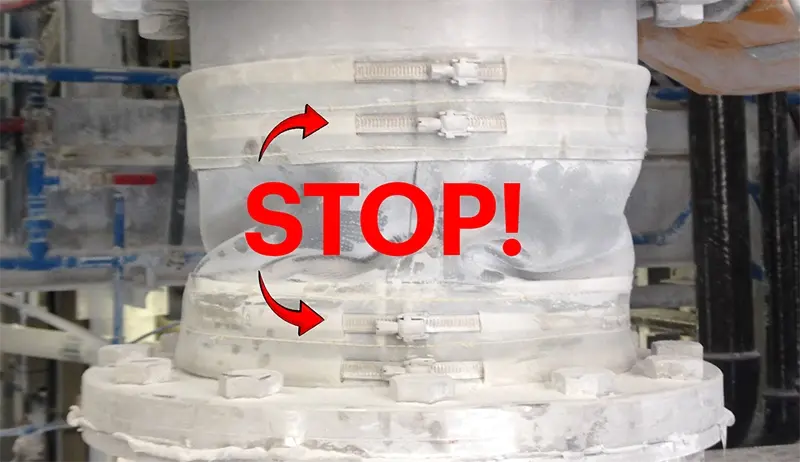Flexible connectors play a crucial role in bulk processing industries, serving as essential components in systems that require the movement, transfer, and containment of products. Whether it’s milk powder, coffee or flour, it’s imperative to choose the right flexible connector that can perform at its peak and provide clean, safe and efficient product transfer.
While traditional silicone-based connectors have been widely used in the food processing industry in the past, they do come with a number of limitations that can affect overall performance and efficiency.
The Limitations of Silicone Flexible Connectors Compared to Seeflex
Silicone-based flexible connectors have often been used for their ability to withstand a wide range of chemicals and high temperatures; however, these connectors are not without some significant downsides.
Here we take a look at how silicone flexible connectors compare to the industry-leading BFM® blue-band Seeflex alternative:
![]()
| Silicone Connectors | BFM® Seeflex Connectors | |||
| 1 | Susceptibility to Wear and Tear: Silicone connectors are susceptible to tearing and wear, which can occur due to factors such as movement, pressure, and exposure to abrasive substances. This vulnerability can lead to frequent replacements and increased downtime, affecting operational efficiency. |
1 | Enhanced Durability: Seeflex is designed to withstand wear and tear, offering a longer lifespan in the field than silicone. Its construction resists tearing, cracking, and ripping, making it a durable option that reduces the need for frequent replacements. |
|
| 2 |
Attachment Systems Prone to Leakage: |
2 |
100% Seal with Snap-Fit Installation: |
|
| 3 | Opaque Construction: Silicone connectors are not transparent, making it challenging to monitor the flow and contents of the systems into which they are integrated. This lack of visibility means you can't immediately see if there is a product flow or consistency problem. |
3 | Transparency: One of the standout features of our popular Seeflex 040E and 020E materials is its transparency, which allows you to monitor the flow, consistency, and quality of the substances being transported, simplifying troubleshooting and maintenance. |
|
| 4 |
Low Pressure Resistance: |
4 |
High Pressure/Explosion Resistance: |
|
|
5 |
Poor ATEX Safety: |
5 |
Excellent ATEX Safety: |
|
| 6 |
Expensive Replacement and Cleanup Costs |
6 |
Cost-Effectiveness: |
The Seeflex Solution
BFM® fitting’s unique ether-based polyurethane alloy, Seeflex, represents a groundbreaking alternative that addresses all these issues for silicone connector users.
 Seeflex is fully food-safe, compliant with all relevant 3A, FDA, USDA and EU regulations, and it can be safely used with clean-in-place (CIP) process chemicals. It is manufactured using a special process that means it is significantly stronger than most other urethanes, and it simply doesn’t tear or rip – a common problem with silicone.
Seeflex is fully food-safe, compliant with all relevant 3A, FDA, USDA and EU regulations, and it can be safely used with clean-in-place (CIP) process chemicals. It is manufactured using a special process that means it is significantly stronger than most other urethanes, and it simply doesn’t tear or rip – a common problem with silicone.
In factories where food safety is paramount, but operational reliability and performance are also important, the limitations of silicone-based connectors can present significant challenges.
By choosing BFM®’s Seeflex food-grade connectors, food manufacturers can genuinely improve operational efficiency and safety, whilst still ensuring the integrity of their products.



